Introduction
In recent years, the concept of renewable energy has gained significant traction worldwide. As we continue to experience the devastating effects of climate change, there’s been an urgent need to develop more sustainable energy solutions that will help mitigate the impact of fossil fuels on the environment. Renewable energy offers an attractive alternative to traditional energy sources, and modern building design has embraced this trend with open arms. In this article, we’ll explore the different renewable energy sources available for modern building design, the benefits of renewable energy, sustainable building design with renewable energy, the challenges of renewable energy integration, and case studies of successful renewable energy integration in modern building design.
Renewable Energy Sources for Modern Buildings
Solar power is the most used renewable energy source in modern building design. Solar panels, which are made up of photovoltaic cells, capture sunlight and convert it into electricity. They are usually installed on rooftops or the ground and can be used to power everything from lights to HVAC systems. Some buildings even have solar panels integrated into their facades or windows.
Wind energy is another popular renewable energy source for modern buildings. Wind turbines, which come in a variety of sizes, are installed on towers and capture the kinetic energy of the wind to generate electricity. They are typically located in areas with high wind speeds, such as coastal regions or mountainous areas.
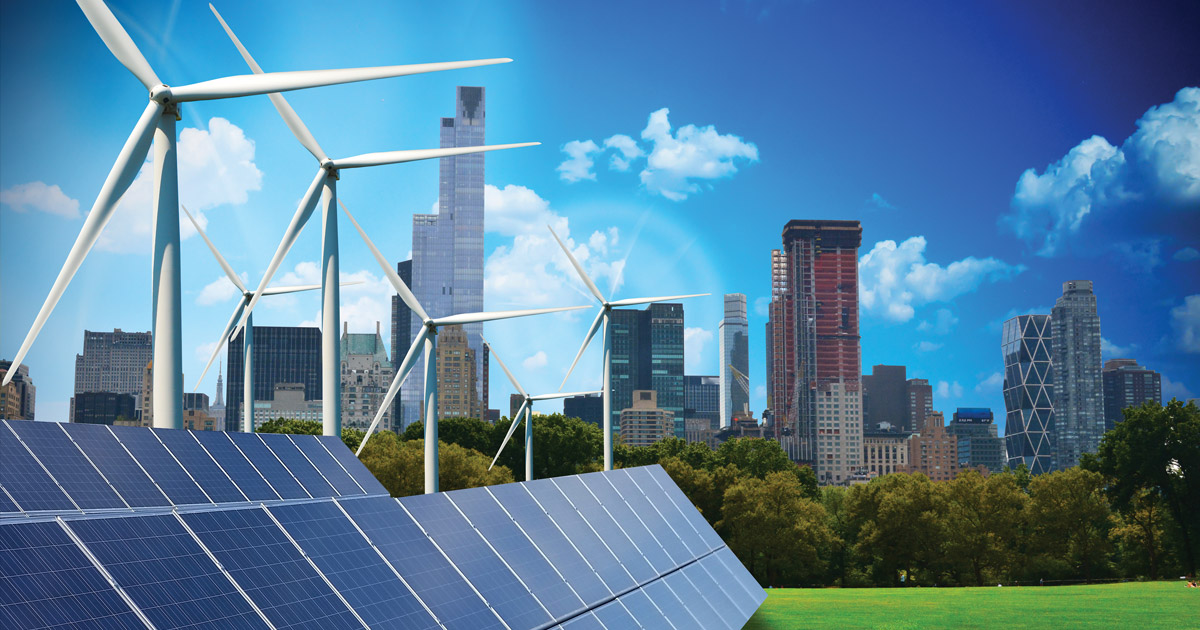
Geothermal energy is a renewable energy source that is derived from the earth’s internal heat. Geothermal systems use pipes buried in the ground to transfer heat from the earth to the building. This heat can be used for heating and cooling systems, and even for hot water. Geothermal energy is especially popular in areas with high heating and cooling demands, such as cold climates. Also, biomass energy is derived from organic matter, such as wood chips or agricultural waste. Biomass can be burned to generate heat or electricity, or it can be converted into biofuels. It’s a popular renewable energy source for heating and electricity generation in buildings, especially in rural areas where there is easy access to biomass.
Hydropower is a renewable energy source that is derived from the movement of water. Hydroelectric power plants use turbines to capture the energy from flowing water to generate electricity. Hydropower is especially popular in areas near rivers or other bodies of water. Overall, renewable energy sources offer a sustainable and environmentally friendly alternative to fossil fuels for modern buildings. By incorporating these renewable energy sources into building design, we can reduce our carbon footprint and help mitigate the effects of climate change.
Benefits of Renewable Energy for Modern Building Design
Renewable energy sources offer numerous benefits for modern building design, including reduced carbon footprint, energy efficiency and cost savings, increased property value, energy independence and security, improved indoor air quality, and flexibility in design. These benefits make renewable energy an attractive option for building owners and occupants who are looking for sustainable and environmentally friendly solutions.
- Reduced Carbon Footprint: Modern building design can use renewable energy sources to significantly reduce carbon footprint. This is because renewable energy sources produce fewer greenhouse gas emissions than traditional energy sources. For example, solar panels and wind turbines can be installed on buildings to generate electricity without burning fossil fuels, reducing greenhouse gas emissions.
- Energy Efficiency and Cost Savings: Renewable energy sources can help buildings become more energy-efficient, resulting in cost savings. For instance, solar panels can help buildings generate electricity, which can reduce their reliance on the grid. This reduces the amount of energy consumed by the grid, leading to lower energy bills and cost savings for the building owners.
- Increased Property Value: Buildings that use renewable energy sources are generally more attractive to buyers and tenants. This is because they are seen as environmentally friendly and can command higher prices. Installing renewable energy sources such as solar panels can, therefore, increase the value of a building.
- Energy Independence and Security: Renewable energy sources provide buildings with energy independence and security. They can generate electricity, which can protect them from power outages and other disruptions. For instance, if there is a power outage, a building with solar panels can still operate, while buildings without renewable energy sources will be without power.
- Improved Indoor Air Quality: Renewable energy systems such as geothermal heating and cooling can improve indoor air quality. Geothermal systems use the earth’s constant temperature to heat and cool a building, which can reduce the number of air pollutants and allergens circulating inside. This results in improved air quality, which is beneficial for the health and well-being of building occupants.
- Flexibility in Design: Renewable energy sources offer greater flexibility in building design. For example, buildings can be designed to take advantage of natural light and ventilation, which can reduce the need for artificial lighting and HVAC systems. This not only saves energy but also provides a more comfortable and healthier environment for occupants.
How to Use Renewable Energy for Modern Buildings
To effectively use renewable energy for modern buildings, architects and engineers must undertake a comprehensive analysis of the location and specific requirements of the project. The selection of a suitable renewable energy source and its potential to power the building must also be taken into consideration.
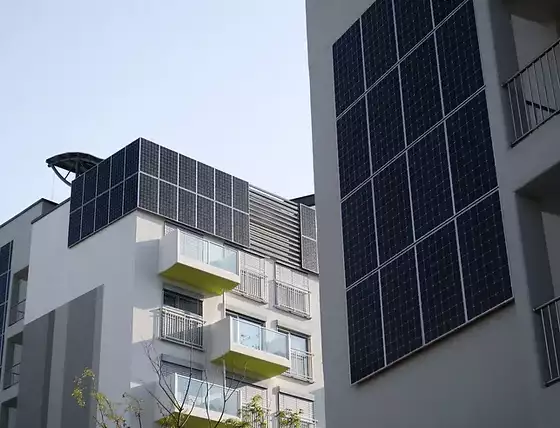
Renewable energy sources such as solar, wind, hydro, geothermal, and biomass should be evaluated based on their unique advantages and limitations. In general, solar and wind power are the most commonly used options for powering buildings. While solar power is readily available and does not produce emissions, it can be costly to install and requires regular maintenance. Wind power is also a popular option, as it does not produce emissions and is readily available. However, wind turbines can be noisy and require considerable space.
Hydroelectricity and geothermal energy are other potential sources of renewable energy that can power buildings. Hydroelectric dams can provide a reliable source of electricity, but their construction can negatively impact the environment. Geothermal systems can efficiently heat and cool a building using the heat from the earth’s core, but installation costs can be significant, and the system may not be feasible in all locations. Biomass energy is another option, which involves burning organic materials like wood chips. However, it is imperative to ensure that biomass is sourced sustainably to avoid negative environmental impacts.
Integrating the selected renewable energy source into the building design requires careful planning by architects and engineers. This may involve incorporating solar panels on the roof or designing the building to take advantage of natural light and ventilation to reduce the reliance on artificial lighting and HVAC systems. It may also involve incorporating wind turbines into the building’s façade. Also, the regular maintenance and monitoring of renewable energy systems are essential to ensure their optimal functioning. This may involve inspecting and cleaning solar panels or ensuring that wind turbines are properly aligned and functioning.
Sustainable Building Design with Renewable Energy
Sustainable building design with renewable energy is an essential aspect of green building that aims to reduce energy consumption, minimize carbon footprint, and increase the use of clean energy. By integrating renewable energy sources into building systems, sustainable building design can help reduce the environmental impact of buildings while providing a comfortable and healthy indoor environment.
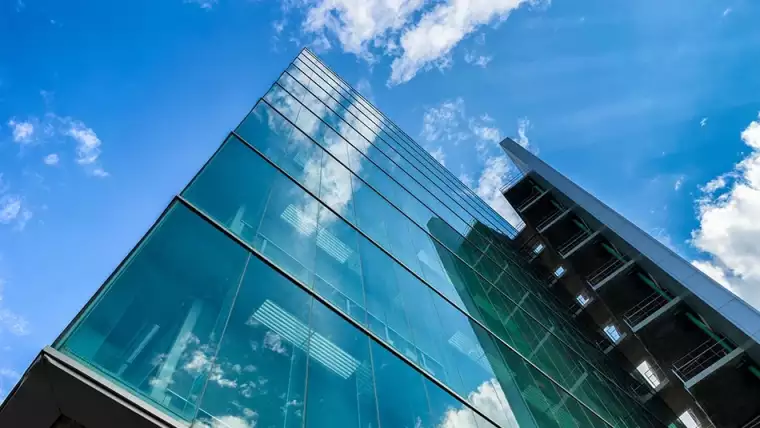
One of the most popular renewable energy sources used in sustainable building design is solar energy. Solar photovoltaic panels can convert sunlight into electricity, which can be used to power a variety of building systems, including lighting, ventilation, and HVAC. Solar thermal systems can also be used to heat water for domestic use or space heating. By using solar energy, buildings can reduce their dependence on fossil fuels and reduce greenhouse gas emissions.
Wind turbines can also be used to generate electricity for buildings. By harnessing wind energy, buildings can generate clean energy and reduce their reliance on the power grid. Geothermal systems, on the other hand, can provide both heating and cooling. By utilizing the constant temperature of the earth, geothermal systems can significantly reduce energy consumption and costs. Sustainable building design also includes passive solar design, which maximizes the use of natural sunlight. By incorporating features such as large windows, skylights, and light wells, buildings can reduce the need for artificial lighting and improve indoor air quality. Green roofs are another important aspect of sustainable building design. By growing vegetation on the roof of a building, green roofs can help reduce the amount of heat absorbed by the building, which can help reduce energy costs and improve air quality.
Natural ventilation is also an essential feature of sustainable building design. By designing buildings to use natural airflow to cool and circulate air, buildings can reduce their dependence on artificial ventilation systems, which can be energy intensive. Efficient insulation and windows are also crucial components of sustainable building design. Buildings that are well-insulated and have energy-efficient windows can significantly reduce their energy consumption by preventing heat loss in the winter and heat gain in the summer.
Finally, energy storage solutions are an important aspect of sustainable building design. Energy storage solutions, such as batteries and thermal storage systems, can help buildings store excess energy generated by renewable energy sources. This energy can then be used during times when renewable energy source isn’t available, ensuring a consistent supply of clean energy.
The Challenges of Using Renewable Energy for Modern Building
The integration of renewable energy sources in building design has gained significant momentum in recent years due to rising energy costs and environmental concerns. However, despite the many benefits of renewable energy, several challenges need to be addressed before widespread adoption can occur. One of the most significant challenges of renewable energy integration in building design is the high upfront costs associated with installation. While the long-term savings from using renewable energy are often substantial, many building owners and developers may struggle to justify the initial investment required.
In addition, the availability of renewable energy sources can be limited in certain areas. For instance, solar panels may not be as effective in regions with low levels of sunlight. This can restrict the use of renewable energy sources in certain areas and may require the installation of backup energy systems to ensure that power demands can always be met. Another challenge is the technological limitations of renewable energy systems. The technology used in renewable energy systems is still evolving, and some systems may not be as efficient as they could be. This can lead to increased costs and lower energy output, making it more challenging to achieve a sustainable and cost-effective building design.
Regulatory hurdles can also create challenges for the integration of renewable energy in building design. Building codes and regulations can make it difficult to install renewable energy systems in some areas, leading to additional costs and delays for building owners and developers.
Despite these challenges, renewable energy offers numerous benefits for building design. By integrating renewable energy sources such as solar, wind, and geothermal, buildings can significantly reduce their carbon footprint and energy costs. As technology continues to improve and the regulatory landscape evolves, we can expect to see more widespread adoption of renewable energy in building design in the coming years.
Case Studies of Renewable Energy Integration in Modern Building Design
Renewable energy integration in modern building design has become increasingly important in recent years, and case studies have played a significant role in highlighting the potential benefits of such integration. Let’s examine some of the key aspects of these case studies. One of the most important factors driving the adoption of renewable energy in modern building design is the falling cost of technology. For example, the Empire State Building in New York City has installed a large solar array on its roof, which was made possible by the declining cost of solar panels.
Another significant factor is the need to address environmental issues. Buildings are responsible for a significant proportion of global energy consumption and greenhouse gas emissions, and integrating renewable energy into building design can help to reduce these impacts.
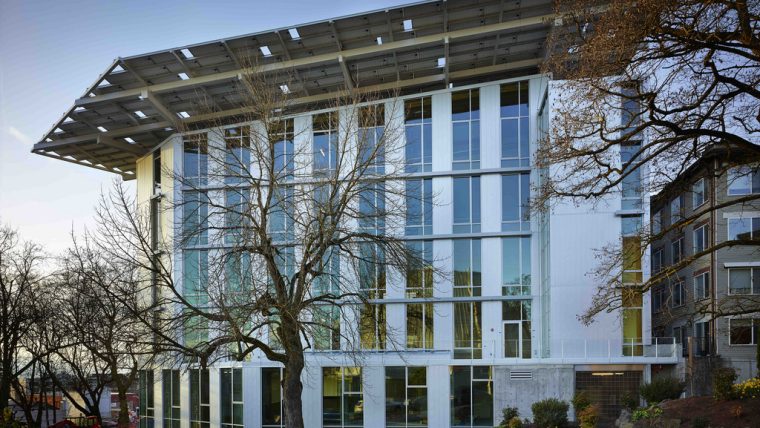
Bullitt Center in Seattle
The Bullitt Center in Seattle is an excellent example of a net-zero energy building that uses a combination of renewable energy sources to generate and conserve energy. The building uses solar panels, geothermal energy, and rainwater harvesting to meet its energy needs. The Edge in Amsterdam is another remarkable example of sustainable building design. The building incorporates a range of renewable energy sources, including solar panels and wind turbines, as well as energy-efficient design features such as a highly efficient cooling system.
The Bahrain World Trade Center is another innovative example of renewable energy integration in modern building design. The building uses wind turbines that are integrated into its design to generate up to 15% of its energy needs.
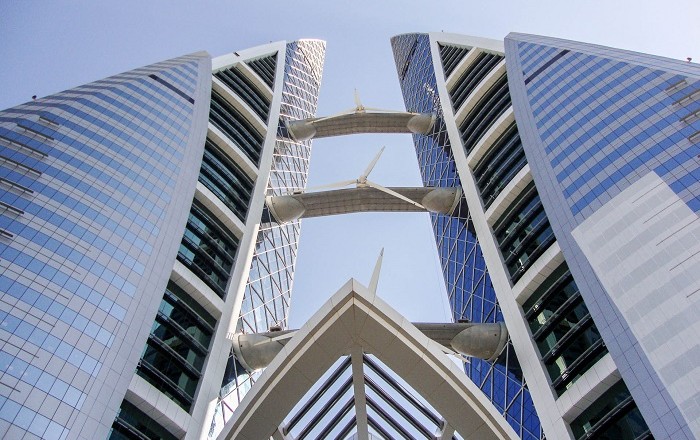
The Bahrain World Trade Center
Overall, these case studies demonstrate that renewable energy integration is not only feasible but also highly beneficial for modern building design. While there are still some challenges associated with the adoption of renewables, the increasing availability of technology, falling costs, and growing awareness of environmental issues are making renewable energy integration an increasingly viable and attractive option for building owners and developers.
Conclusion
Renewable energy offers numerous benefits for modern building design. By using renewable energy sources, buildings can significantly reduce their carbon footprint, become more energy-efficient, and increase their property value. However, several challenges must be addressed, such as high upfront costs and limited availability of renewable resources. Despite these challenges, there are many successful examples of renewable energy integration in modern building design, such as the Bullitt Center and the Edge. It’s clear that renewable energy is the way of the future, and building owners and developers must embrace this trend if they want to create sustainable, energy-efficient buildings that will stand the test of time.

